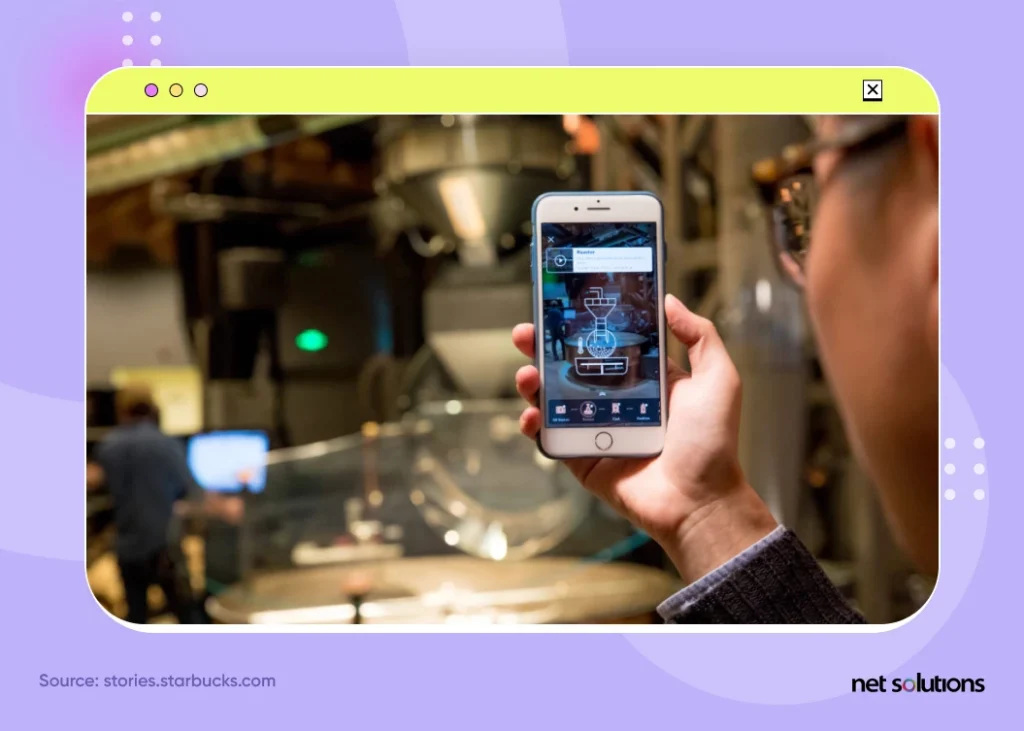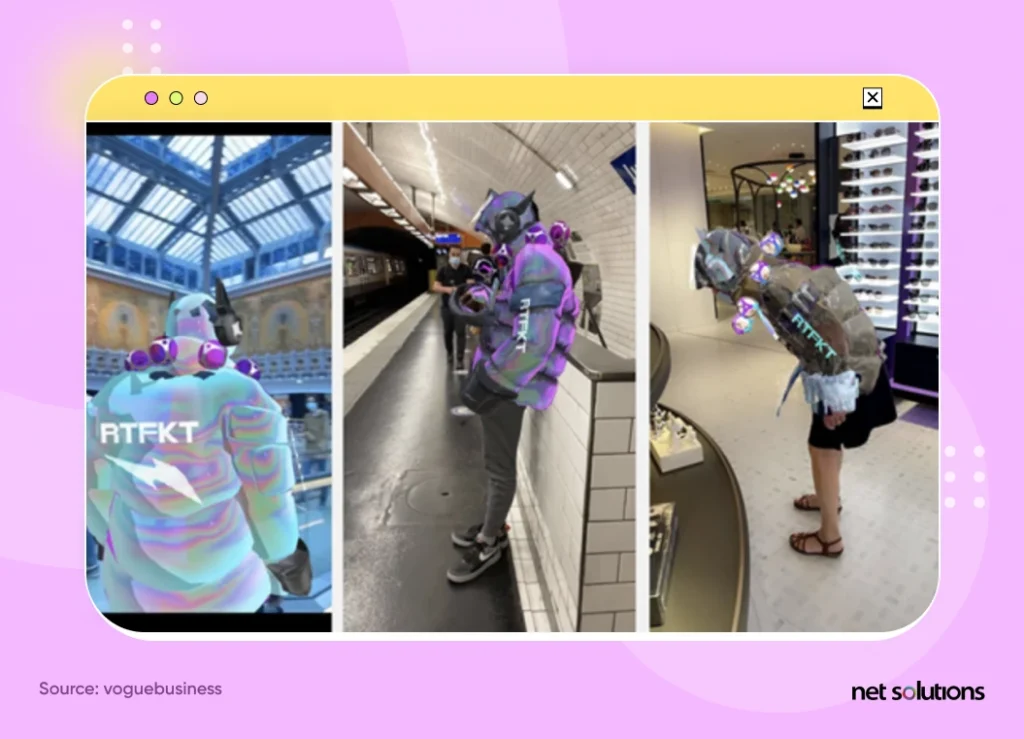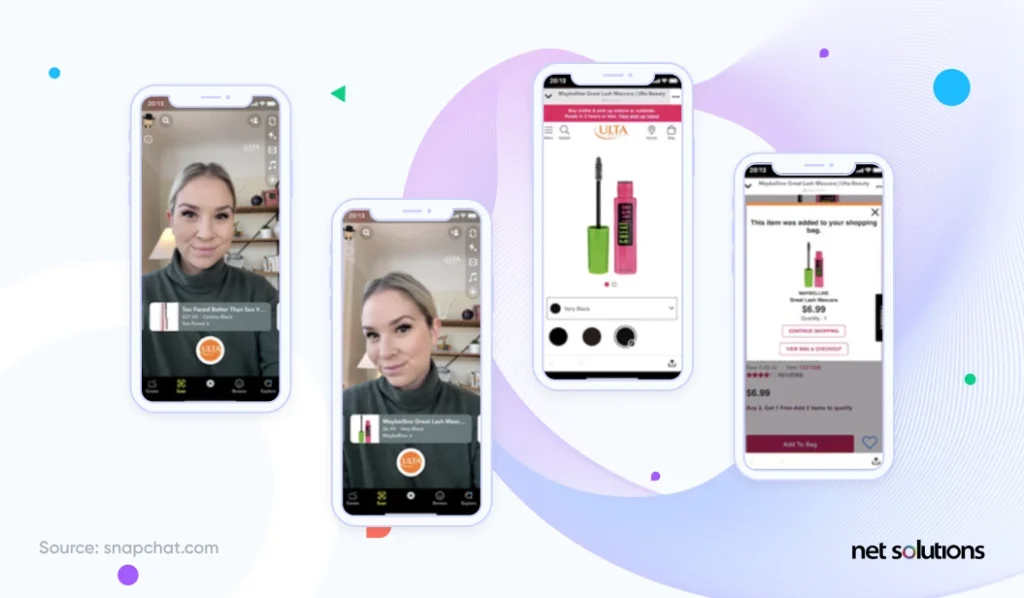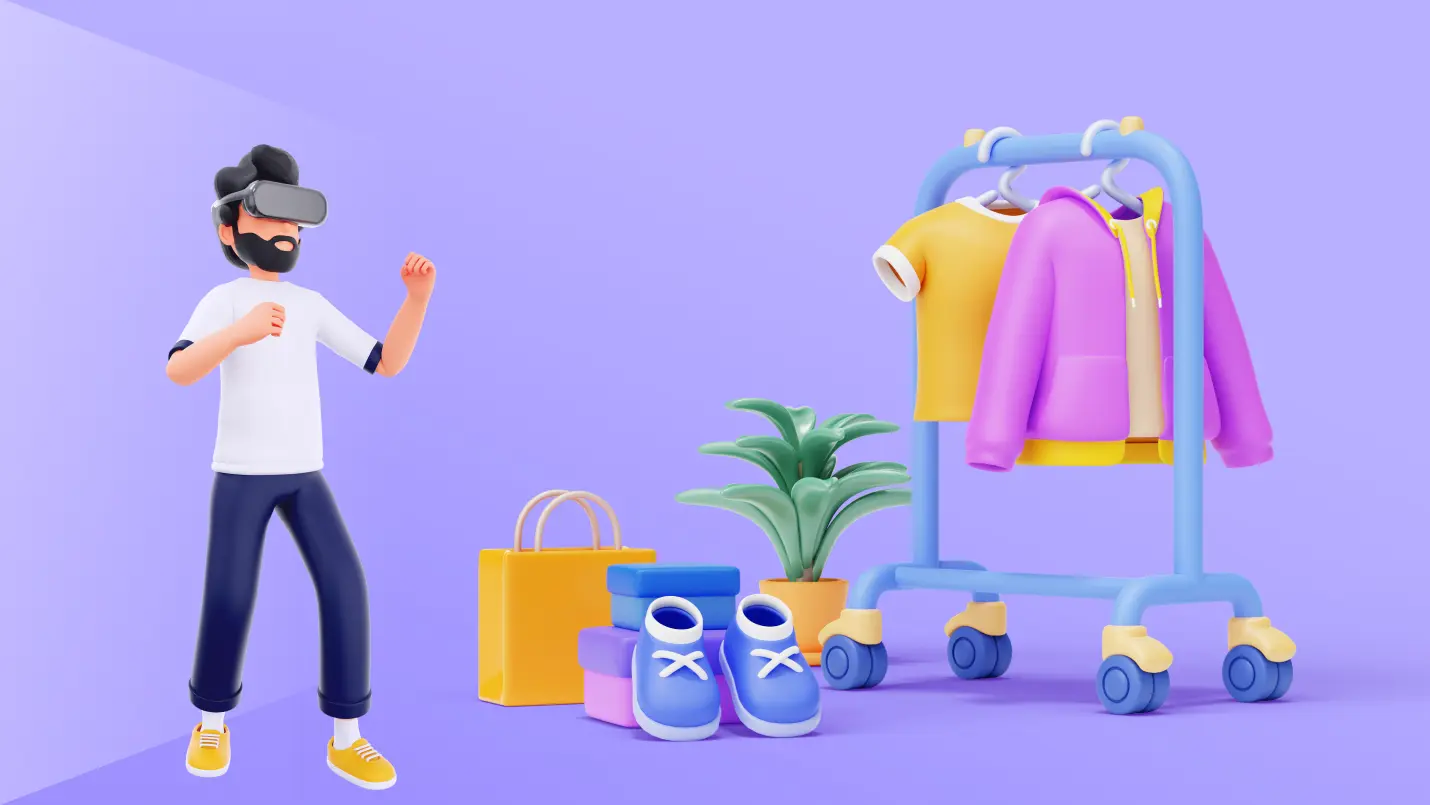The Augmented Reality market is worth $38.56 billion and it has caught on with retailers seeking to enhance business, customer base, and revenues. But not all retailers understand the fine details of how Augmented reality works or why it is the next big thing in retail. The article talks about the significance of Augmented Reality in retail, AR use cases, and challenges that retailers have to overcome to successfully adopt it.
A few years ago, Augmented Reality was just a pie-in-the-sky idea. Today, it is a hot technology trend with a CAGR of 40.9% from 2022 to 2030.
AR is everywhere in healthcare, gaming, entertainment, digital marketing, education, and retail. Leading retail brands are using it to drive customer engagement, increase revenue, and improve brand awareness. Also, over 32% of shoppers are regular users of AR, and 73% of smartphone AR users say they are highly content with the experience.
How is Augmented Reality transforming the retail industry?
Compared to today’s retail environment, which is organized, has global outreach, and is easily accessible – the traditional retail markets have exhibited many loopholes, especially during the pandemic times.
- Traditional retail markets require physical interaction and need a costly setup.
- Unlike online retail stores, physical brick-and-mortar businesses have fixed hours.
- Products can run out of stock in the traditional retail environment.
- Traditional retail markets lack immersive experiences. Your chances of sales mainly depend on the selling skills of your salespeople.
- Traditional stores often lack customization.
Businesses can leverage augmented reality to boost growth and stability when they move towards application modernization. Here’s how augmented reality resolves various issues mentioned above:
1. Boosting sales with customer engagement and retail experimentation
Immersive shopping experiences ensure customers keep buying from you. Retailers understand this completely and leverage the power of augmented Reality (AR) to offer shopping experiences that educate and spark curiosity. All application modernization strategies focus on augmented reality as a vital aspect to leverage.
Starbucks is a famous example of how retailers can use AR to spark curiosity. In 2017, they offered their first in-store AR experience at Asia’s first Starbucks Reserve Roastery. A new world appeared when you stood before the rotating cask and held your phone to the two-story copper vessel adorned with over 3000 hand-carved Chinese stamps. You could see the journey of a roasted bean to become a cup of coffee.

“It’s like Alice in Wonderland meets Willy Wonka. It’s one thing to imagine a fully integrated in-store and digital experience which brings together the impressive scale of the Shanghai Roastery with the highest quality small-lot coffee beans. It’s quite another to watch the AR experience get built, and come to life.” – Emily Chang, Ex Senior vice president and chief marketing officer at Starbucks, China
2. Easing trials/tryouts to earn better ROI
Most people dread trials and tryouts because they’re tedious and time-consuming. However, AR makes them a lot easier by letting buyers try clothes, accessories, and furniture virtually before buying them. Here are a few examples:
- IKEA has launched a new app called IKEA Kreativ that lets you take an accurate 3D scan of your room and replace your existing furniture with IKEA products you would love to see.
- The optical prescription eyewear retail brand Lenskart scans users’ faces to place the digital reflection so that you can see how it looks on you before you buy it.
- Clothing brands like ASOS and Adidas use AR to offer virtual clothing try-on using which you can sense how a pair of shoes, jackets, or jeans will look on them before they buy it.
By applying AR for trials and tryouts, these brands have significantly increased their conversions and witnessed tremendous growth.
Virtual trials and tryouts also help retailers offer a contactless experience. It is a radical shift, especially after the COVID-19 pandemic, when people were reluctant to visit and buy from retail stores. Businesses ensure that AR is included as a necessary component in their application modernization roadmap – to leverage maximum returns from their modernization process.

3. Building loyalty by helping customers customize their products
Around 36% of consumers prefer buying customized products. – The Deloitte Consumer Research Report
While buying a product, customers want to feel like it truly belongs to them. They are more inclined to buy the product when you let them customize it. Most retail brands offer product customization options to their customers. Some even use augmented reality – AR is one of the key application modernization benefits that businesses stand to gain when they modernize their legacy systems.
The Italian motor vehicle brand Piaggio uses AR to let customers personalize their Vespa scooters through an app before purchasing. You use the app to change the color, modify the style, add/remove accessories, etc.
This is a clever use of AR in retail as it helps retailers attract more customers, gather actionable insights about customer preferences, and foster brand loyalty by offering them the freedom to choose the product the way they want.
4. Breaking language barriers for global outreach
With over 4500 written languages worldwide, catering your products and services to everyone is challenging. Even if many people understand English, the message doesn’t have the same impact as when presented in their regional language.
AR is helping retailers break language barriers and cater digital experiences to customers in their native language. A famous example is Google Translate AR mode which lets customers see translated messages in over 40 foreign languages. Google has even invented AR Glasses that let you see subtitles when two people communicate in different languages.
Do you know what this means if you’re a retailer? Languages will no longer be a barrier to effectively selling to customers. Instead, you can sell your products anyone worldwide, even to people who don’t speak your language.
5. Simplified social media content creation with shareable and traceable content
AR-powered filters and displays are fun and powerful organic marketing tools to sell faster by showcasing what your product can do. That’s what Ulta Beauty did with its Snapchat filters in January 2022. They released shoppable AR filters on Snapchat that users can swipe through and take photos with virtual makeup looks.

“Gen Z is looking for different ways to engage and interact with products and brands they care about.” – Rajni Jacques, Global Head of Fashion and Beauty Partnerships at Snapchat
The research from Snapchat also shows that 93% of its users are interested in using AR for shopping. Hence, it would be best to give AR filters a shot.
6. Bringing down staffing expenses
Hiring and managing staff is one of the biggest challenges for retailers. According to Federal Reserve Economic Data, unfulfilled retail jobs rose from 750,000 before COVID to 1.1 Million in July last year. Retailers had to staff up during the holiday season.
AR takes a lot of staffing worry off the retailer’s shoulders by assisting users with extensive information about products they want to buy and helping them with store navigation, thus reducing the need for human shop assistants.
Use cases for AR in retail
1. Space visualization and virtual tours
Imagine walking through a store or a property without paying a physical visit. It’s not a fantasy but the most radical use of augmented reality in retail. AR retail apps like Magicplan allow customers to see how their homes will look after renovation through an AR-enabled residential property design. They can even take a virtual walk or estimate the materials needed for renovation. Similarly, the Lowes AR app makes shopping easy and breezy by letting customers quickly navigate through brand stores, choose better routes, or find what they need.
2. Color matching
Finding matching colors and creating an optimal pallet for a room or outfit can be challenging for retailers. However, retailers like Dulux make it a lot easier by using augmented reality to let customers choose the new wall color for their homes.
The Prestige ColorPic app takes this two steps further by letting users pick a perfect wall color and order it from Amazon.
3. In-store displays
Some retailers also install in-store displays to offer shoppers interactive experiences through augmented Reality. Kate Spade, an American fashion design house, uses AR to display customizable bags using decorations and accessories.
Similarly, the cosmetic brand Charlotte Tilbury uses AR displays to showcase how shoppers’ faces will look with different makeup and lipstick colors.
4. AR fitting rooms
Some retailers also use augmented reality to ensure that customers no longer have to try clothes to see if they fit. They offer virtual fitting rooms where customers can see which clothes fit best without straining them. Here are two examples:
- The fashion retail chain Timberland has installed displays where visitors can see a mirror-like view of themselves and try on different clothes.
- The Chinese apparel brand Lily’s takes this up a notch by putting an AR display on the window of a store. Here, passengers can try on clothes as they wait for trains.
5. Heavy appliances & furniture shopping
Shopping for heavy appliances and furniture is no less than a gamble. You invest a lot of money, and if it doesn’t look good in your room, you will have nothing but regret. Retailers understand this well. Hence, they allow users to perceive how a piece of furniture will fit in their room. While Ikea is a famous example, many other furniture retailers offer equally exciting solutions.
The Homestyler interior design app lets customers create a complete interior design of their rooms. Another app, Decor Matters, uses AR and artificial intelligence to visualize how different room designs will look in users’ living spaces.
BMW also uses augmented reality to let users explore their car models, configure parts, take snapshots, etc.
6. Retail store merchandising
AR also plays a critical role in retail store merchandising by providing customers with additional information about products directly from their phones. Philips is a famous example of a brand that uses AR tags for marketing its electronics. Any customer willing to buy it can use their smartphone to read the AR layer of the tag and gather enough information about a product before approaching a store assistant.
Augmented Reality in retail: future and possible challenges
AR is already playing an important role in retail by letting you try out clothes, perceive furniture, and customize vehicles directly from your phone. All application modernization trends highlight the value of incorporating AR in all present applications. What does the future hold for AR in the retail industry? Here are a couple of things we can expect:
1. Enhanced online and in-store shopping experiences
AR is already redefining shopping by letting you virtually try on and try out clothes, accessories, and furniture from your phone. But this is not the end; we’ll see new and engaging shopping experiences.
Here are two innovations that AR can bring to in retail industry in the future:
- Use of holograms to ensure users view and feel the product closely before buying it.
- A grocery shopping assistant that guides you on when you need to buy groceries, replace the milk in your fridge, or if the bread you’re buying is nutritional.
2. Less product returns
Around 20% of online-bought products (and 9% bought in brick-and-mortar stores) are returned, resulting in lost millions of dollars. AR offers a shopping experience where users can interact with products, scale them, and visualize their intended environments before making a purchase. The approach leads to more satisfaction, avoids unpleasant experiences, makes customers feel reassured, and reduces the chances of product returns.
3. New doors for marketing strategies will open
The radical try-before-you-buy move in retail marketing is just the beginning. AR will open hundreds of other options to attract customers, like promotional flyers, QR codes on billboards, or even marketing collateral that beams holograms offering detailed information about a product.
Imagine a person walking through the park, opening their app, and visualizing your grocery store in front of you in 3D. They can pick items, add them to the cart, and pick the order when they want. If this is the comfort level you offer your customers, why wouldn’t they buy?
Similarly, a person watching a product on a billboard and scanning it to see an interactive ad in a 3D hologram will no longer be a scene straight out of a sci-fi movie but a reality.
AR could influence advertising by offering unique 3D interactions than plain 2D images or videos. Interested customers would be able to scale and visualize the product before making a purchase.
AR promises to open new opportunities in the form of virtual events. Retailers would be able to set up virtual product promotions and presentations to generate excitement and invite customers to these exclusive, holographic-based sales events.
However, to reach there, retailers need to work on many challenges. They need to keep the AR experience immersive while ensuring they don’t lose the authenticity and the experience customers want to feel while shopping for things. AR app developers must keep many essential aspects like advertising, localization, incentives and discounts, personal approach, interaction, discoverability, privacy, and user experience. Businesses opting for application modernization services should identify new market segments or opportunities where AR can be applied.
How Net Solutions used AR to create a virtual mobile experience for retail stores
One of our AR ventures was to provide a virtual mobile experience to customers within retail stores by assisting them in buying. The idea was to provide real-time information like description, price, product location, and alternatives as they moved inside the store as they entered the store.
Identifying the need
Maneuvering through supermarkets can be daunting. With numerous products on display, they may get easily distracted and buy what is not needed. It’s also not possible for customer care executives to attend to each customer as thousands of customers walk in each day. That’s why, creating a virtual shopping experience via a mobile device would be more convenient and rewarding for both retailers and customers.
The solution
We built a Retail AR app, which was not only interactive but also empowered customers to find what they were seeking. In other words, it assisted them in making an informed choice and helped retailers position their products well.
We included the following features were into the app:
- Guiding the customer to a specific department.
- Referring the customer to a recommended product.
- Empowering store owners to add routes for customers searching for a department or a relevant product.
The technology
We built the Retail AR app using the Swift language, which we earlier employed in the Apple ARKit iOS framework for marking the positions of products and for creating navigation path arrows.
The result
1. The virtual and real-world convergence in the retail environment
Our AR retail app-enabled retailers to encourage prospective and existing customers to shop in-store rather than online. Further, through this virtual and real-world convergence, retailers could track and notify their customers of any deals – current or upcoming.
For example, let them know that the cereal they were looking for is now available, that there is a special offer on dairy products four aisles away, and guide them step-by-step to the exact aisle where they can pick the item.
2. Engaging customers in real-time
Through this app, retailers can connect with customers in real-time by offering them what they are looking for, with the correct information and tools to help them make an informed decision. For example, mapping the navigation to the products customers are looking for and notifying the customer of deals and special offers.
3. Significant increase in revenue
Another benefit of the app is that with personalization and customer empowerment, retailers could see a marked shift in revenue, on an upswing. By tapping customers’ needs and investing in gen-next technology (AR), customer engagement would be optimal and motivated to purchase more.
4. Saves time
With the AR retail app, customers can locate the products and departments seamlessly, saving them time and energy and enabling them to make quick buying decisions. Also, retailers would end up having more and more repeat customers since they like shopping at a convenient, fast, and hassle-free outlet.
5. Cost reduction
Our retail AR app, which enables customers to make a quick buy, also benefits retailers in another aspect. There is a significantly lesser workforce required, as the app takes precedence.
Customers don’t have to depend on staff members, and the AR app acts as a personal assistant. The app directs them to the products they are looking for, offering other alternatives if necessary and alerting them of special offers in-house. Thus, this technology leads to a significant cost reduction in-store, a win-win for the retailer.
Frequently Asked Questions
According to a report from MarketingDive, Only 1% of retailers are using augmented Reality, including brands like IKEA, Starbucks, Amazon, etc. The reason behind such a low number is that around 51% of brands feel that they’re not prepared to integrate AR into retail.
AR-powered shopping is augmented reality’s function in retail that lets users virtually try on and test products before buying them. A famous example is fashion retailers that allow users to virtually try clothes and fashion accessories or IKEA, which lets them perceive the furniture they want to buy in their rooms.
A Deloitte study shows that around 94% of customers are expected to use AR for shopping the same way they did in 2021. Also, 32% of shoppers prefer AR for shopping. Hence, it is safe to say that augmented Reality is the future of shopping.
Companies and entrepreneurs can use live streaming technology to stay in touch with their followers and friends in real-time, providing exclusive content instead of annoying advertisements. Live video streams can elevate a brand’s inbound marketing to new heights.



